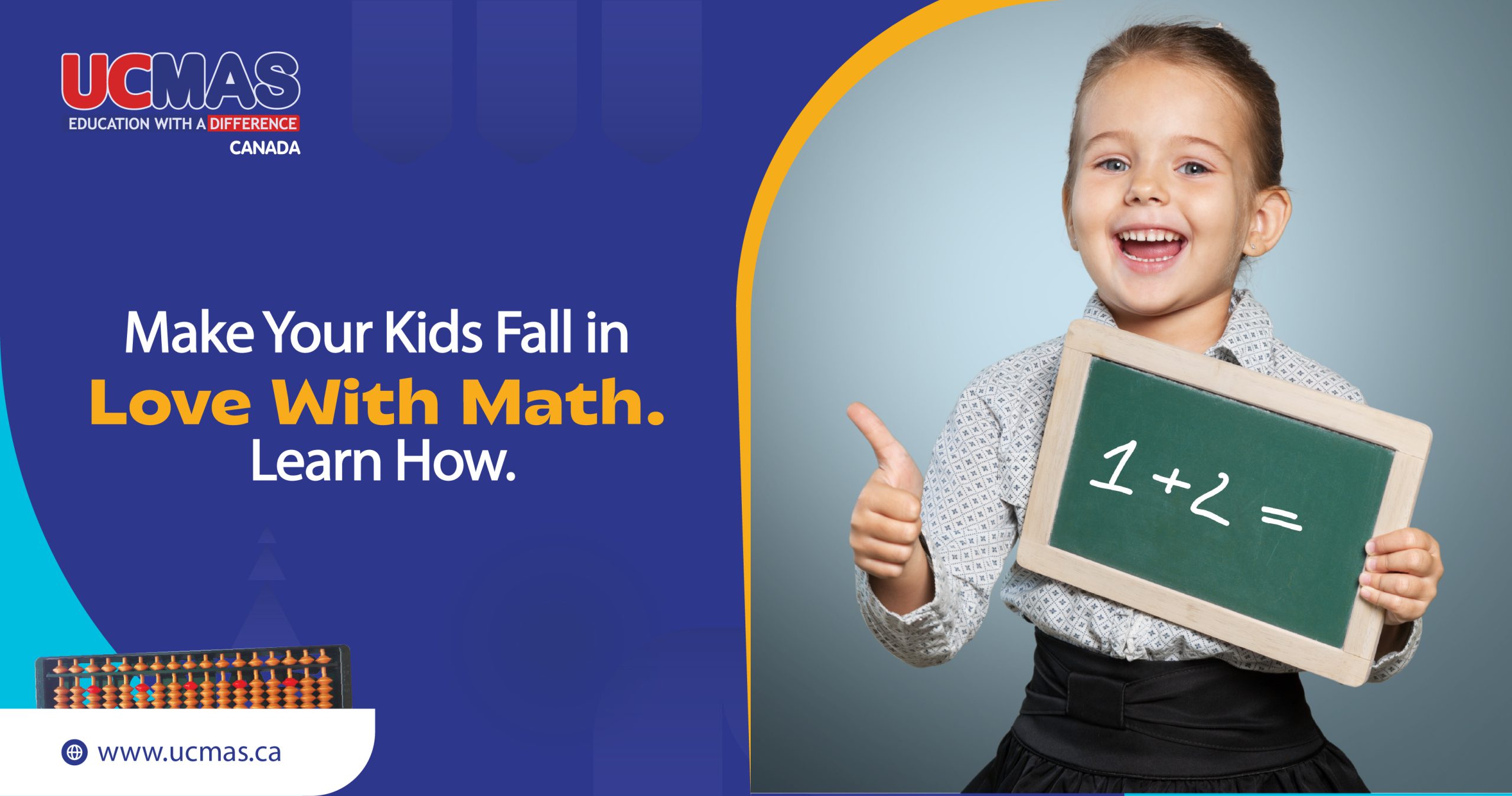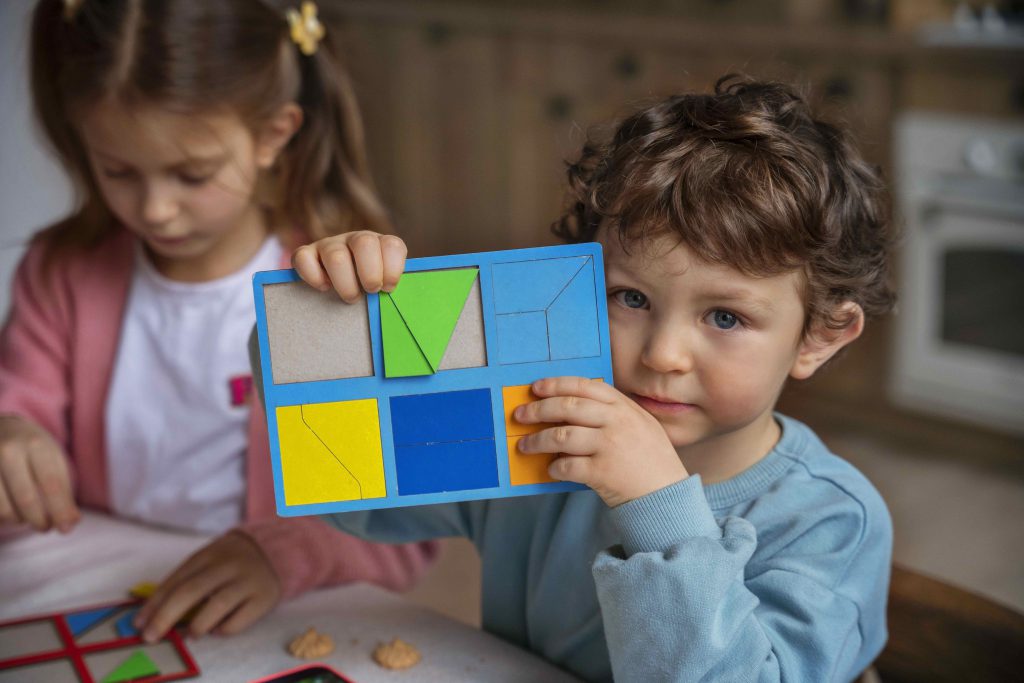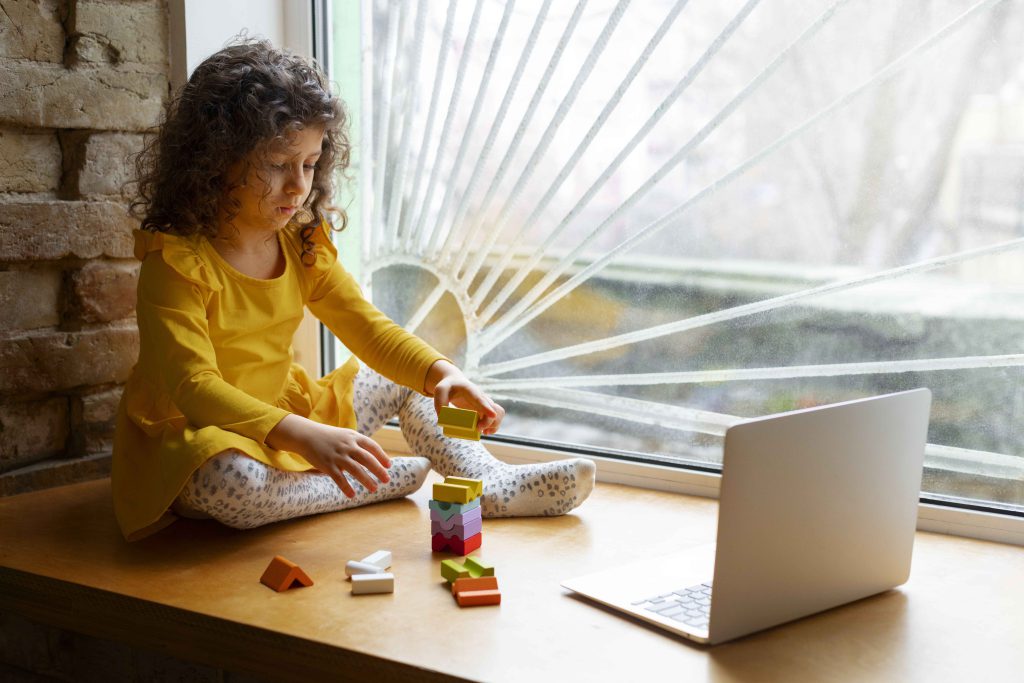
Math has a bit of a PR problem. When you say the word “math” in a room full of kids (or even adults), you might get a few groans, an eye-roll or two, and maybe even someone whispering, “I’m just not a math person.” But here’s the thing: no child is born hating math. Children are naturally curious, pattern-seeking little beings. Somewhere along the way, we either feed that curiosity or we stifle it with worksheets, pressure, and fear of failure.

Is Math Anxiety Real?
Math anxiety is worry or fear about solving math problems. When a person cannot use their working memory as they typically can, it can make it difficult to perform calculations in their head. This may lead to a misconception that they are bad at math, reinforcing their anxiety.
So, how do we turn math from a monster into magic? How can we help our kids develop a love for numbers, logic, and problem-solving? That’s what this blog is all about. The below sections will discuss some fun ways in which a child can be introduced to math helping them see numbers not as a hurdle, but as a playground full of exciting patterns, puzzles, and possibilities.
9 Simple and Fun Ways to Introduce Math to Kids
Whether you’re a parent juggling work and homework or a teacher trying to make fractions less frightening, we’ve got you covered with fun, effective, and surprisingly simple ways to make math engaging from the very start.
1. Start with Stories, Not Symbols
Before kids can solve equations, they need to care about what the numbers mean. Enter: math storytelling. Use everyday scenarios to build math conversations. Instead of saying, “What’s 2 + 3?”, try, “You have 2 apples, and your friend gives you 3 more, how many do you have now?”
You’re not just teaching addition; you’re teaching that math is part of life. And if you want to go a step further, check out the i-Maths Program by UCMAS Canada. It’s designed to build logical thinking, problem-solving, and reasoning skills in young children using fun stories, experiments, and puzzles.

2. Play With Patterns and Puzzles
Kids love puzzles. Patterns, sequences, tangrams, these aren’t just games; they’re powerful tools that build spatial reasoning and number sense. Whether it’s a jigsaw puzzle on a rainy day or a LEGO set that needs organizing by size and color, these activities sneak in math without anyone realizing it’s “learning.”
And guess what? Those very skills are at the heart of our UCMAS abacus math. Children trained in abacus techniques become lightning-fast in mental math because they’ve sharpened their pattern recognition and memory early on.
3. Bake, Shop, Measure, Count
The real world is brimming with math. You just need to hand the kids the measuring cup. Let them measure ingredients while baking cookies that will introduce fractions. Have them weigh fruits at the grocery store, estimate, and compare. Give them fake money to count and let them handle the account while playing shop.
These small things build comfort with numbers. Over time, kids stop seeing math as abstract and start seeing it as a skill that helps them do things. In fact, build a daily routine for your child that has some subtle math moments like counting steps as they climb the stairs, measuring ingredients while cooking, or spotting patterns on a morning walk!

4. Make It Visual with the Abacus
Let’s talk about the superstar of visual math: the abacus. Abacus math isn’t just about beads and rods, it’s a powerful technique that improves concentration, memory, and problem-solving in children. The act of physically moving the beads while solving equations engages both hemispheres of the brain, making learning more holistic and lasting.
And the best part? It makes mental math fun. So the next time you hear a parent searching for abacus classes, you’ll know exactly why. The UCMAS Abacus Math Program offers age-appropriate levels and engaging formats that grow with your child.
5. Celebrate Mistakes Like Discoveries
One of the biggest barriers to learning math is fear, the fear of getting it wrong. It’s crucial to create an environment where kids are not just allowed, but encouraged, to make mistakes. Math is like a puzzle, and errors are clues, not failures.
So, instead of saying, “That’s wrong,” say, “Hmm, interesting approach! Want to try a different way?” This simple shift can make a world of difference in your child’s confidence. You’ll find more great strategies in this blog for parents on building math foundations early.
6. Use Tech, But Choose Wisely
Kids today are digital natives. And while screen time should be balanced, educational tech can support math learning in dynamic ways. Interactive apps, games, and platforms can bring abstract math concepts to life. The key? Don’t let the screen do all the work. Use apps that encourage critical thinking, trial and error, and real problem-solving, not just passive clicking. The goal is to build a relationship with math, not just complete levels.

7. Create a Math-Friendly Environment at Home
Surround your child with math-positive cues:
- A calendar they can mark
- A clock they can read
- Dice games, math board games, or even dominoes
- Number magnets on the fridge
- Countdowns for birthdays or vacations
Little things create a big mindset shift. Math becomes familiar. Friendly. Fun. And over time, you’ll notice that your child asks math questions, even when it’s not homework time.
8. Let Kids Teach You!
One of the best ways to solidify a concept is to explain it to someone else. So flip the roles. Ask your child to be the teacher. Let them “teach” you how to add, subtract, or use the abacus. They’ll feel empowered, and you’ll get to see exactly how much they’ve absorbed and where they need more help.
This strategy works wonders with children enrolled in abacus classes, where confidence is built through repetition, visualization, and real-time practice.

9. Be their Cheerleader
Here’s a simple truth: your attitude about math shapes your child’s attitude, too. Even if you didn’t love math growing up, resist saying things like “I was never good at math.” Instead, model curiosity. Celebrate effort. Praise persistence. If your child sees math as something that can be learned with practice and patience, they’ll carry that belief into every classroom and beyond.
Make Math a Journey, Not a Test
At the end of the day, math isn’t about speed drills or high scores. It’s about building a brain that can compare, evaluate, reason, and solve. And that journey should feel exciting, not exhausting. Whether it’s through storytelling, abacus learning, puzzles, or everyday tasks, your child’s relationship with math is being formed right now. Start early. Make it joyful. And if you ever need a little expert support, UCMAS is here to help.
Book an info session with us to learn about our award-winning Abacus Math Program. Wondering, “Where can I find abacus math near me?” Use our location finder and locate our center near you.Let’s raise a generation of kids who love math.






